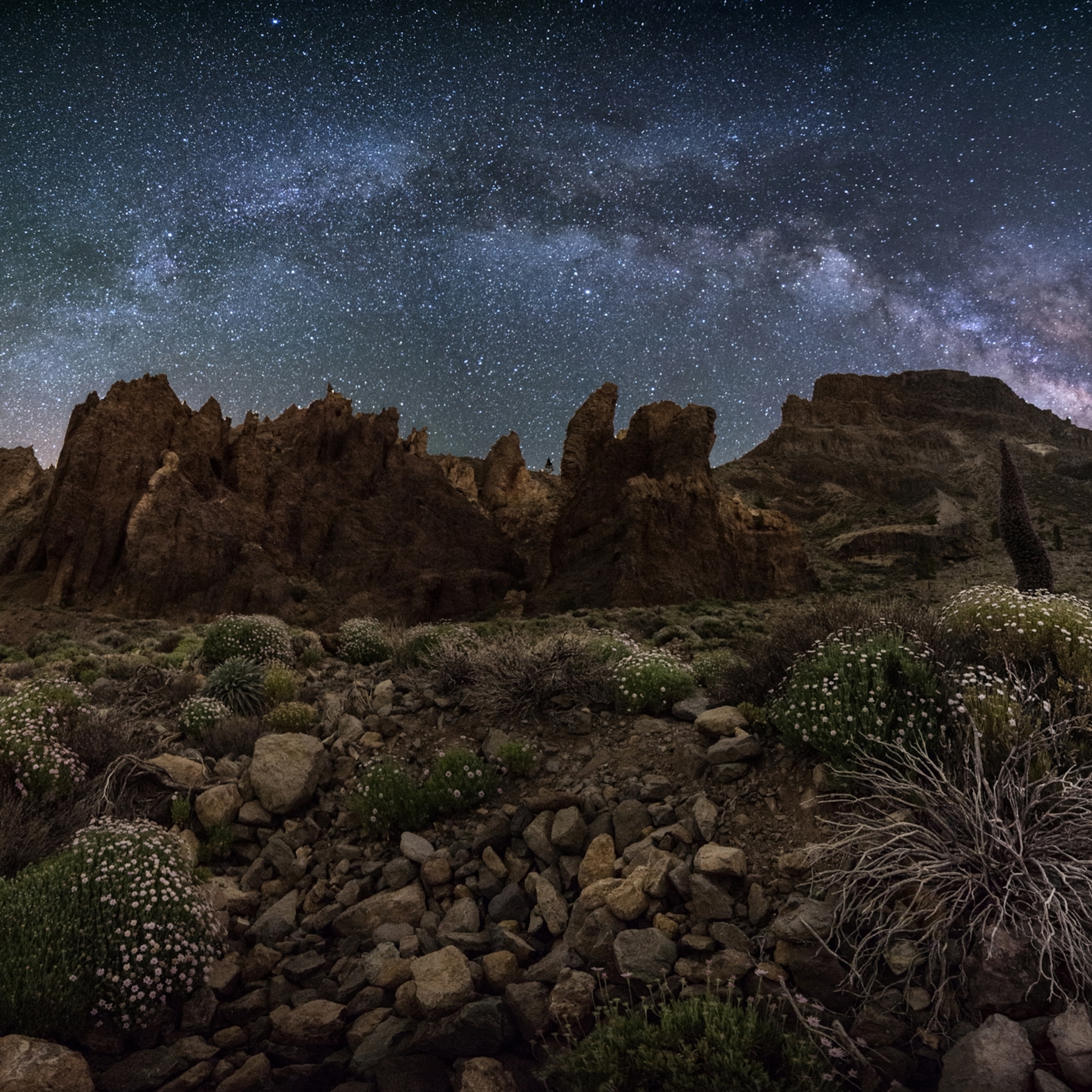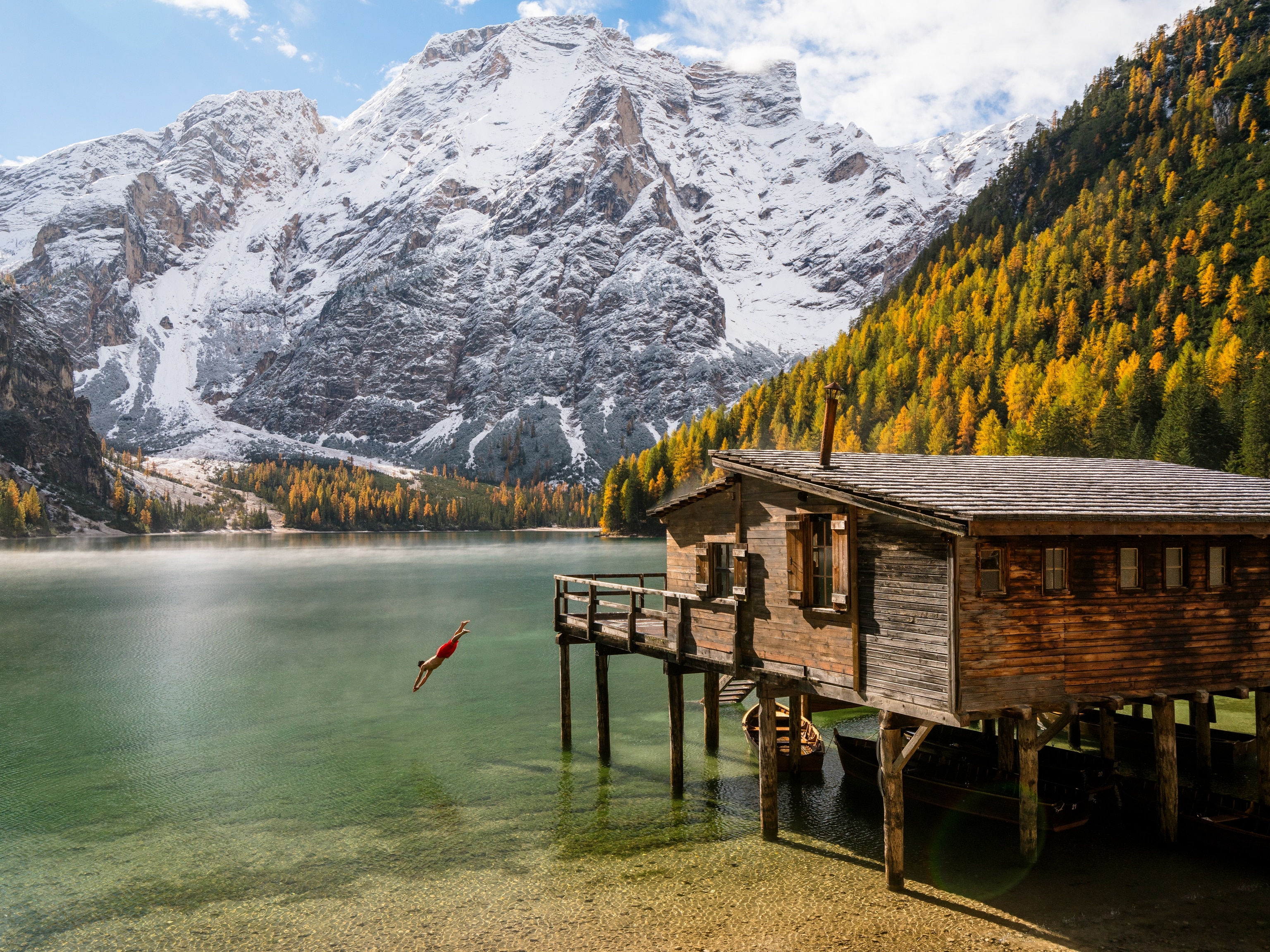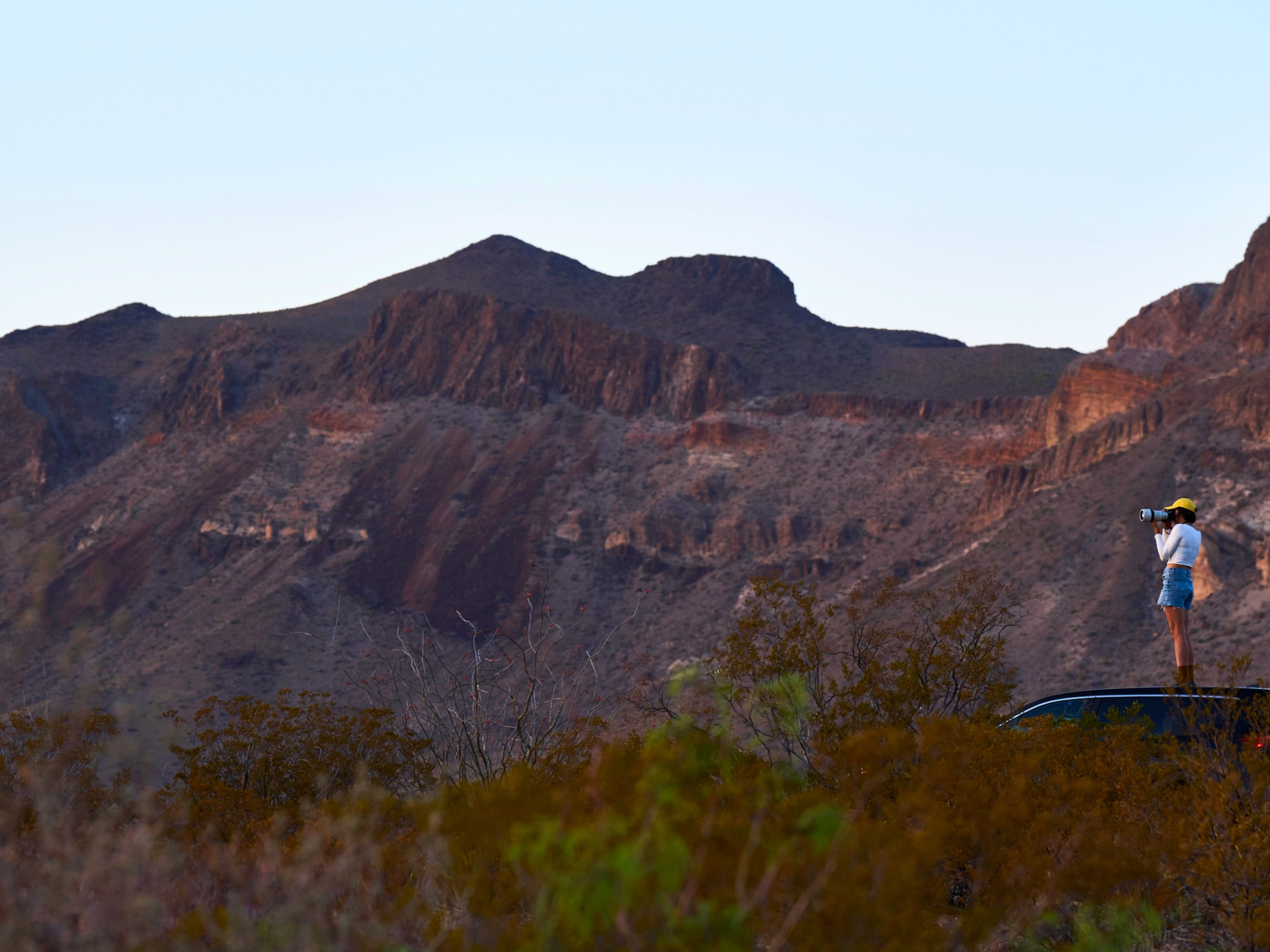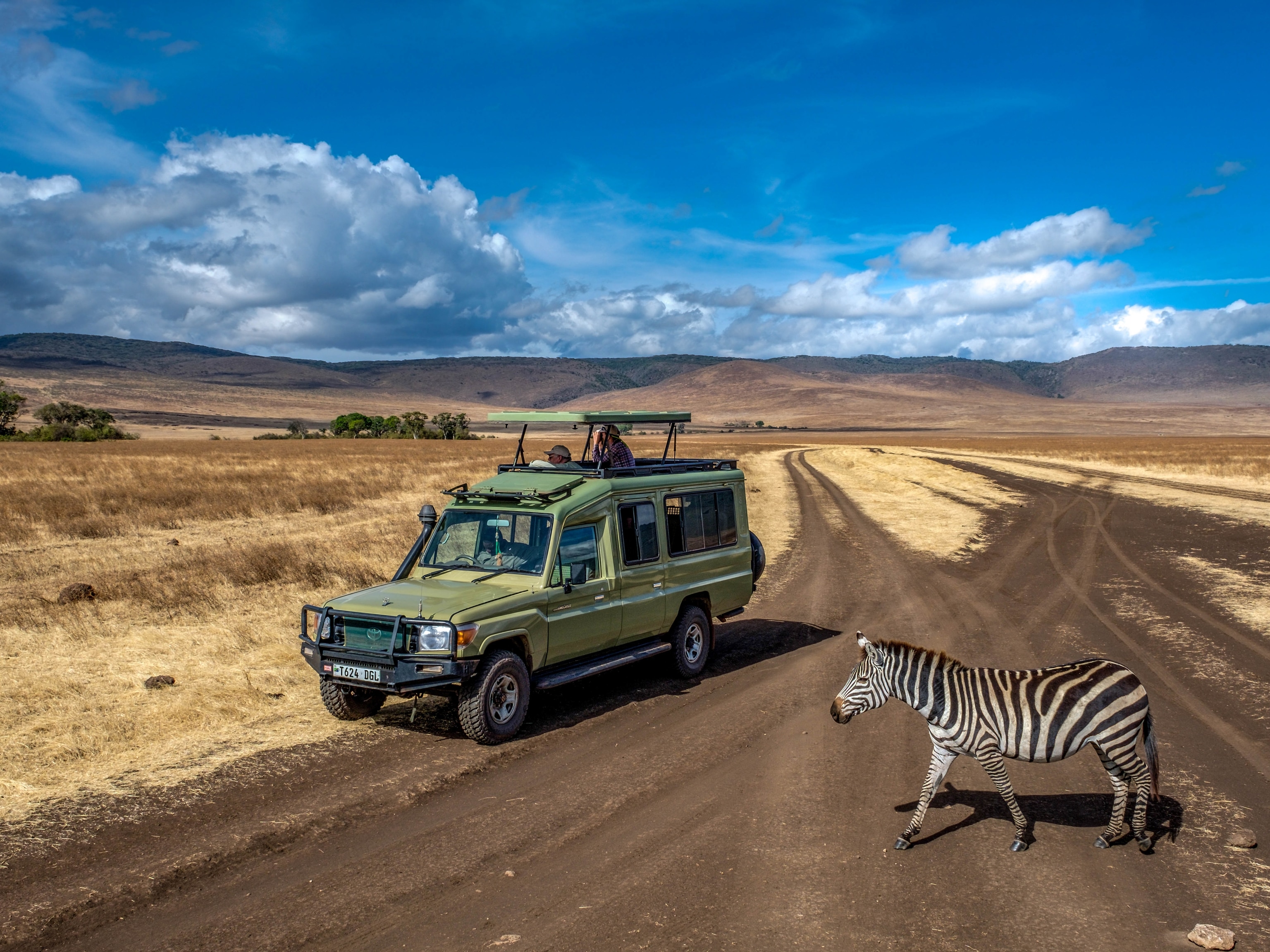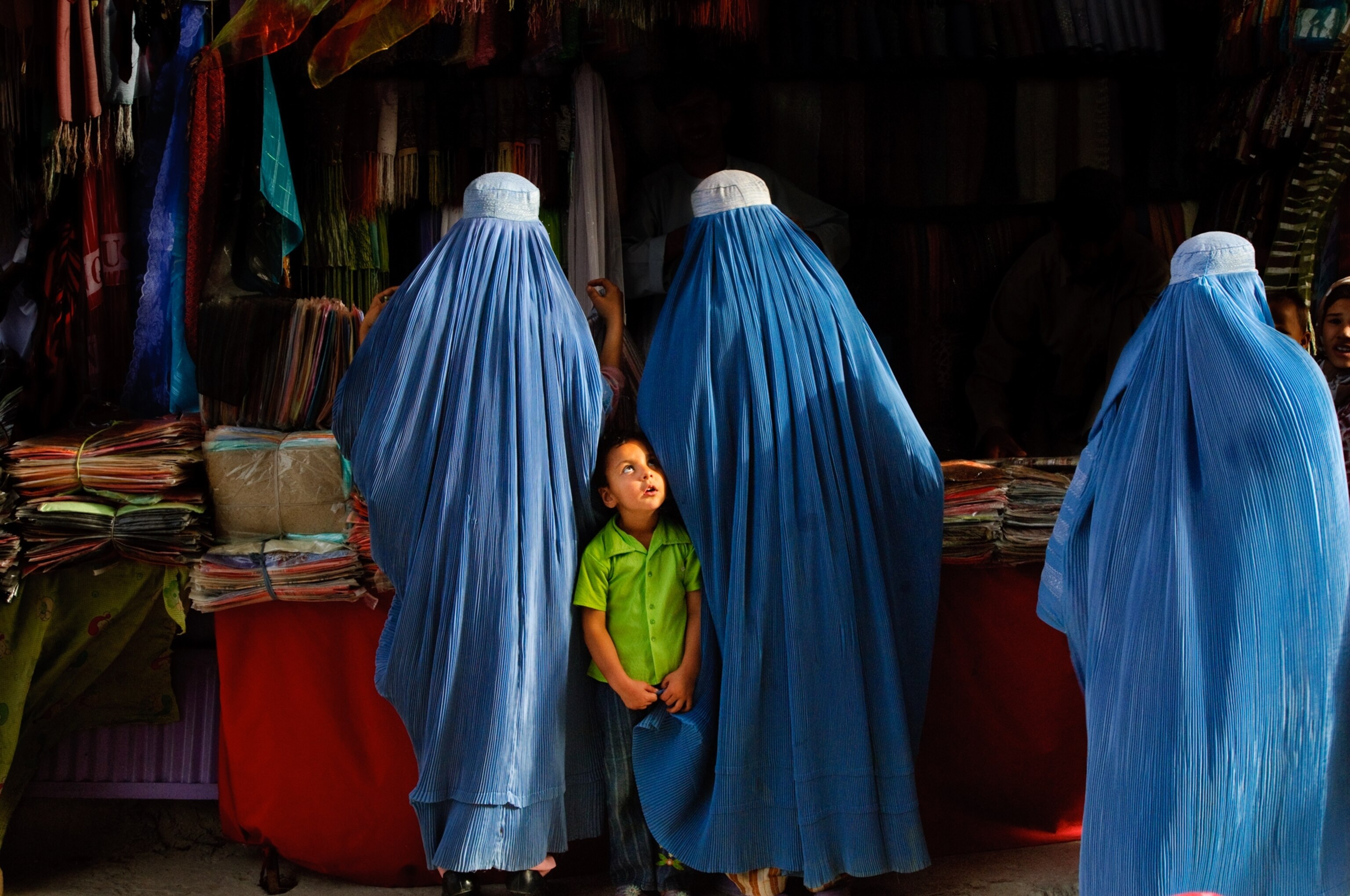
Photographer Alison Wright's Favorite Places to Photograph
See 2013 National Geographic Traveler of the Year Alison Wright's favorite places to visit and photograph.
It seems that I developed my wanderlust while still in utero. My mother was a British flight attendant for Pan Am, and travel was a part of my life from the time I was an infant. Once my younger brother and I were old enough, my mother would take us to the airport as a recreational activity. We’d sit on the hood of the car, eating long straps of black licorice, and watch the planes take off. I loved the smell of jet fuel.
I received my first camera on my 10th birthday and I fell in love with taking pictures. My little Kodak Instamatic went everywhere with me, and photographing people helped me overcome my innate shyness. Later, when a high school teacher introduced me to the term "photojournalist" at age 15, I knew that’s what I wanted to be. Since then I have spent a career traveling to the remotest regions of the globe. The curiosities of humanity will never cease to engage me, but it’s the emotive beauty and grace of the human face, in all its diversity, that will never cease to inspire me.
Afghanistan
When I think of my favorite places that I’ve traveled to as a photographer, I can’t help but reflect on the people of these lands.
In Mazar-e Sharif, Afghanistan, I watched with amusement as this young child grabbed the hems of a few burkas before zoning in on her mother in a busy marketplace. As I moved through the cities and around the countryside, women threw their burkas over my head. But ensconced in our secret tents, they would kiss me three times on my cheeks and thank me for coming. I was often invited back into their homes, where we would secretly share a cup of cardamom tea.
Every Friday, the Muslim day of prayer, is a day off for everyone. I soon discovered where the women in Kabul go on that day: Bagh-e-Zanana. A small, unkempt, publicly owned area of land, the park is a sacred space for women. Off come the shawls and burkas. The women are adorned with brightly colored dresses, long painted fingernails, and heavy jewelry. They bring small picnics and snacks, beat tambourines, dance, and gossip. They trade makeup, sunglasses, and beauty tips. The young girls express themselves in clothes they would never dare to wear in public: hip-hugging jeans and tight blouses, with their hair down.
Afghanistan is such a beautiful country. I wanted to attempt to bring a face to the place to portray a slice of life beyond a war zone.

Cambodia
When I first returned to Angkor Wat after 12 years, I was initially dismayed to find the ancient ruins literally sinking under the weight of tourists. The last time I’d been on top of Phnom Bakheng to watch the sunset I’d been alone with one other tourist. Now, busloads of tourists clambered up Bakheng Hill with an obsessive determination to join the crush of visitors resolute to capture the last rays of the day.
I discovered it was possible to still find peace among the temples simply by circumambulating the ruins in the opposite direction of the tourists. So did these monks, who came out to enjoy the quiet of the day at Bayon Temple.
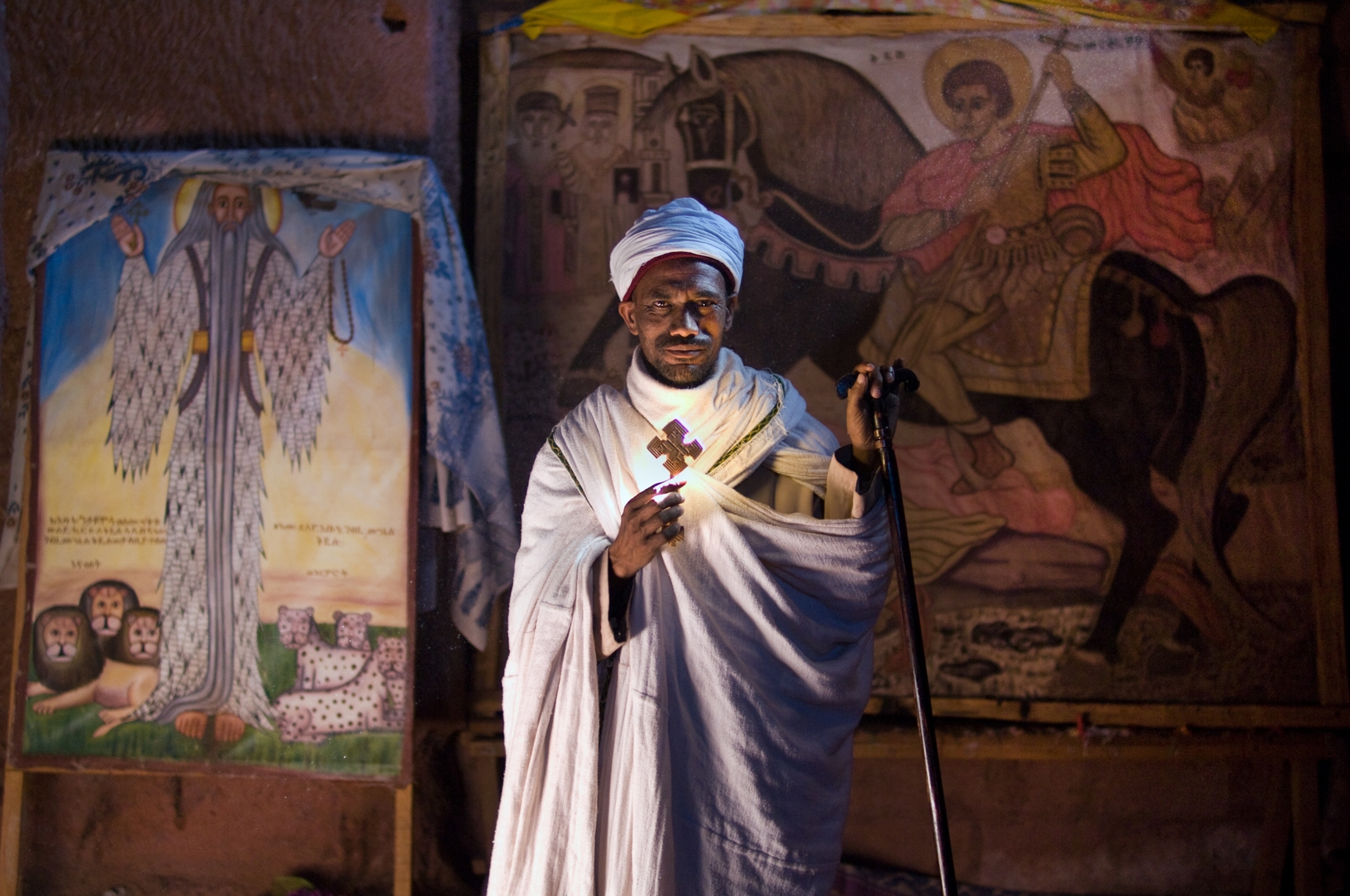
Ethiopia
Ethiopia is a varied land. There are over 200,000 people living among the unique tribes in the Omo Valley, an established UNESCO World Heritage site. Each of the tribes has their own costumes, traditions, and languages. In the small northern town of Lalibela, known for its rock-cut churches, this Orthodox priest began the celebration of the holy Timkat Festival.
From the people of Afghanistan to earthquake survivors in Haiti, people around the world have graciously opened up their homes and hearts to me. Surprisingly, I’ve discovered that it’s often the ones who have the least who share the most. The planet, at times, can seem so vast, with the number of people almost too large for us to comprehend. But when you capture the look in someone’s eyes, an intimate stare, or a knowing glance, his or her situation becomes a shared experience, a more personal connection. Their eyes seem to radiate a dignity, a claim for a right to be seen, no matter what their circumstances. These eyes are what draw us in and connect us.
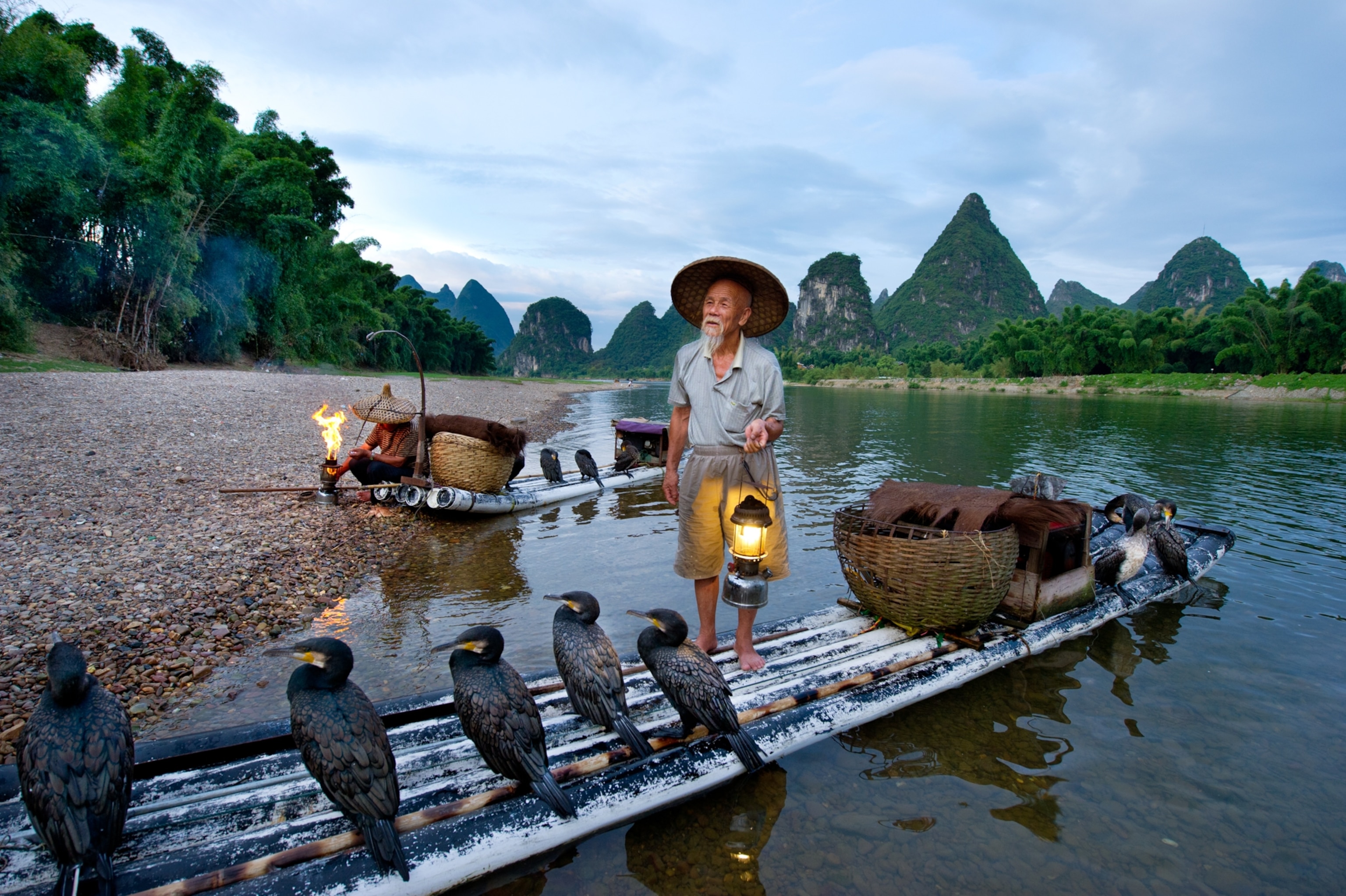
China
I’ve photographed a series of books for National Geographic Traveler on London, Great Britain, and China. I love book projects because they give me more opportunity to explore the various aspects of a country in-depth. Here, cormorant fishermen pause on the Li River in Yangshuo.
From the ancient Silk Road to its cities that rival New York in population, China is extremely diverse and an absolutely massive country to cover. This can create its own set of challenges. Despite often using a translator, the language barrier sometimes proved frustrating for me. Once, I missed my train in a rural area and—having no sense of pride—I yelled out, “Does anyone here speak English?” A young couple shyly stepped forward and said that they had some limited English skills. After extensively photographing me for their Facebook page (a prerequisite for nearly every interaction in China), they kindly helped me buy a new ticket and gave me their cell phone number in case I needed further assistance. Which I did. Often.
I soon saw the brilliance of this plan, and as I worked my way around this expansive land I collected cell phone numbers from gracious but random people along the way. “Hi, it’s Alison. I met you at a taxi stand. Can you please tell this waiter I’d like my dumplings steamed and not fried?” It certainly gained me a lot of new friends, and the experience has made me much more patient with the non-English speaking tourists I’ve since met in New York City. And sometimes they’ll even get my cell phone number.
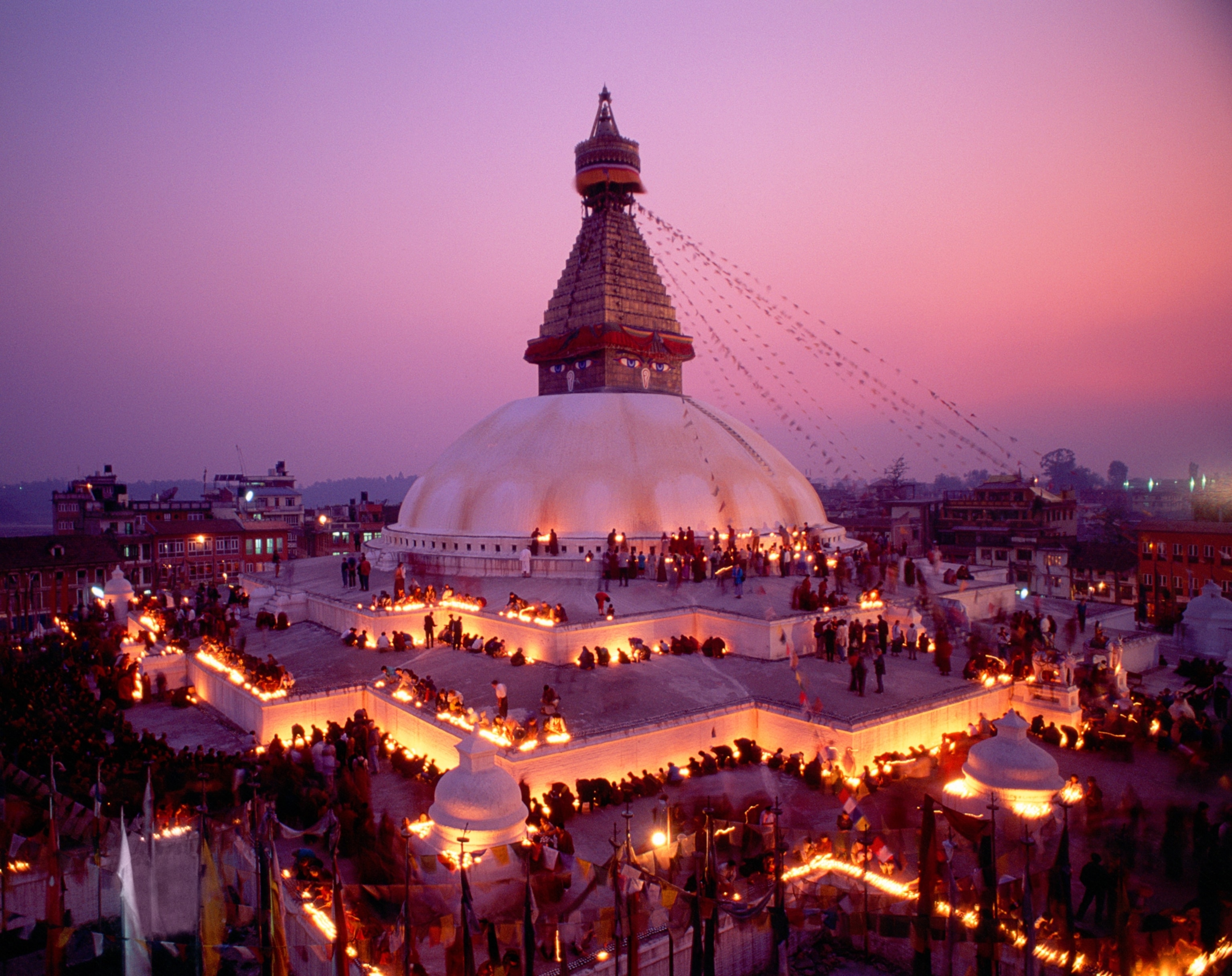
Nepal
I consider Nepal my spiritual home, and part of me shall forever reside in Asia. I was working for a newspaper in my early 20s when I got a three-week assignment in Nepal for UNICEF. As soon as I arrived, I felt so connected to this little Himalaya jewel. I didn’t leave for more than four years, and I continued to keep a house there and return for years after that. I’ve been championing the rights of women and children for an entire career and this inspired me to establish a foundation called Faces of Hope, a nonprofit that globally supports women’s and children’s rights by creating visual awareness and donating directly to grassroots organizations that help sustain them. I’ve been covering the recent earthquake relief efforts in Nepal and when I arrive I still feel as if I’m coming home.
For 25 years I have been documenting the Tibetan life in exile. Since the 1959 uprising, some 130,000 Tibetans in exile have fought to preserve their unique culture and identity while rebuilding their lives in the Tibetan refugee settlements throughout India and Nepal. In this sense, Tibetan refugees have managed more than mere survival; they have created a Tibet in exile that is in some ways more truly Tibetan than their occupied homeland.
With more than 6,000 Tibetan Buddhist monasteries destroyed in Tibet after the 1959 Chinese invasion, many of the monks and lamas have fled their homeland. New monasteries have been rebuilt to house the exiled refugees and the new generation of enthusiastic young monks. Here, at Boudhanath Stupa, a Tibetan lama has died and 100,000 butter lamps are being lit in his memory.
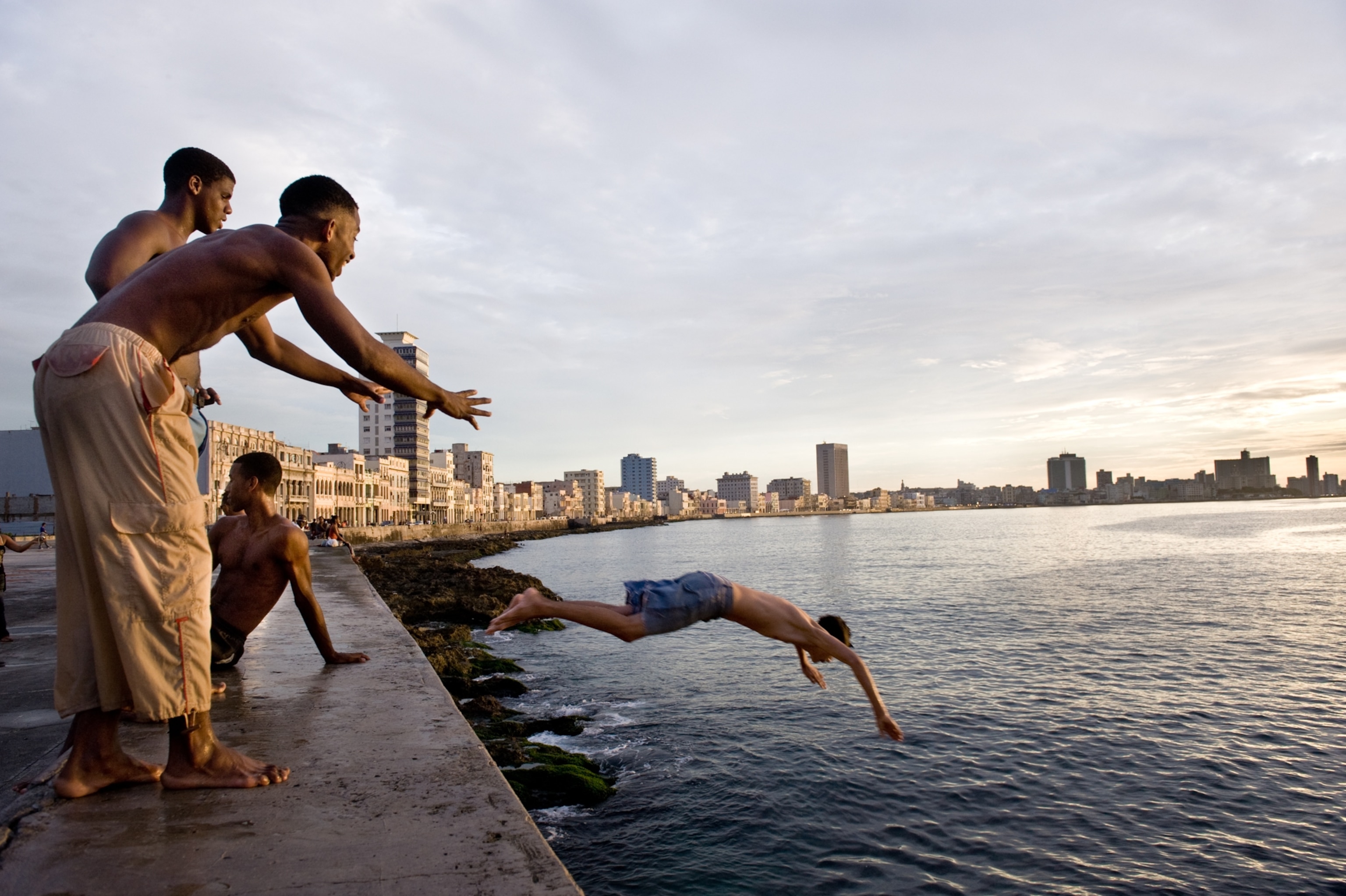
Cuba
In Cuba, a country devoid of many technical distractions, the vibrancy of life spills into the streets. At the end of the day men convene in the streets to play a rowdy game of dominoes. Teenagers practice their steps for their upcoming quinceañera dance, while women gossip and show off their babies. On every street corner children entertain themselves for hours playing baseball with a stick and an old bottle cap.
In Havana, much of the local social life is experienced around the Malecón. The main purpose of building this wall starting in 1901 was to protect the city from rising ocean water, but this esplanade has become a haven for fishermen, a promenade for lovers, and a social gathering place for friends.

Japan
It seems that everywhere I visit in Japan evokes such artistic imagery in everything from the food to the dress to the landscape. While in Kyoto, I was invited to enter the mysterious world of the geisha artisans and spend some time with the girls as they prepared for their evening. They train nonstop for years, studying the formal arts such as dance, music, and poetry. Sanbonashi is a special design of unpainted skin on the back of the neck; in traditional Japanese aesthetics, the most alluring part of a woman is the nape of her neck. This is a captivating observation from a culture that always finds beauty in the most unexpected places.

Papua New Guinea
The respect for the Sepik River in Papua New Guinea is immense. This is most apparent through the locals’ reverence for the exquisitely crafted, yet ominously daunting, Sepik spirit houses. Men, especially of this Blackwater region, are isolated for over a month of initiation practices while receiving tattoos that imitate a crocodile’s skin. The initiates, ranging from adolescents to adults, succumb to sleep deprivation while entering an otherworldly mental state. They partake in feasts and are coached in the secrets of their elders.
- National Geographic Expeditions
After two weeks of rituals, the elders inflict deep, painful gashes with razor blades into the backs and chests of the men. The bleeding symbolizes the draining of their mothers’ blood in order to make them stronger. The open wounds are packed in mud and silt and exposed to smoke to create keloids, scars with a raised emulation of crocodile skin. Their scars are a badge of honor and a proud symbol of their passage into manhood.
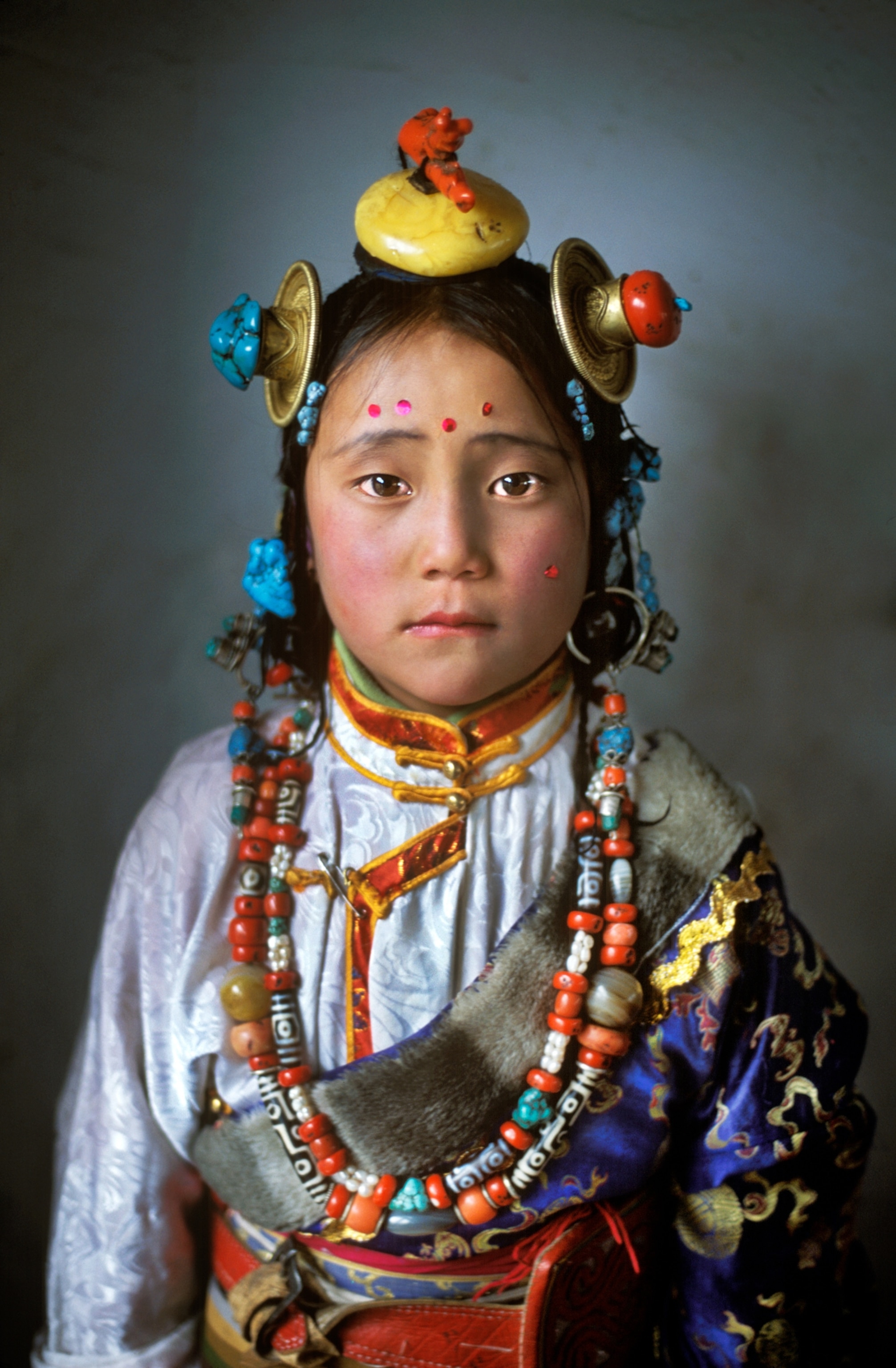
Tibet
I have been drawn to Tibet ever since I was child. I have since made dozens of trips into Tibet, deep into the countryside to follow the nomads. The photos and interviews became the basis of my graduate degree in visual anthropology at UC Berkeley and a number of my books.
On this particular trip I was driving in the remote eastern region of the Tibetan Plateau when I saw this young girl, part of a crowd returning from a horse festival. It was pouring rain, so I brought her to a nearby school to take her photograph. She was so small that the light from the window barely reached her; she had to stand on a desk. Even at the age of five, she had a face that seemed to express the underlying sadness of a culture that has been so challenged. Yet she had a look of resilience and tenacity well beyond her years.
Even the remote eastern areas have been affected as Tibetan nomadic life has started to wane with the government-forced migration of the nomads to towns and cities. This may be the last generation of the pastoral Tibetan nomads as we know them. The wealth of the nomads is measured through their livestock, yet the Chinese are discouraging the Tibetan’s centuries-old livelihood of herding yak and sheep, building ubiquitous fences along the hillsides so that the animals can no longer roam free. The government claims that these animals are destroying the grasses, when in fact for generations it’s these grazing animals that have protected the land—land that is no longer controlled by the Tibetan people. They must abandon the only life they know, leaving their portable yak-hair tents, and move into the cities where they have no job skills for survival. Without the nomads, the Tibetan culture shall continue to vanish.
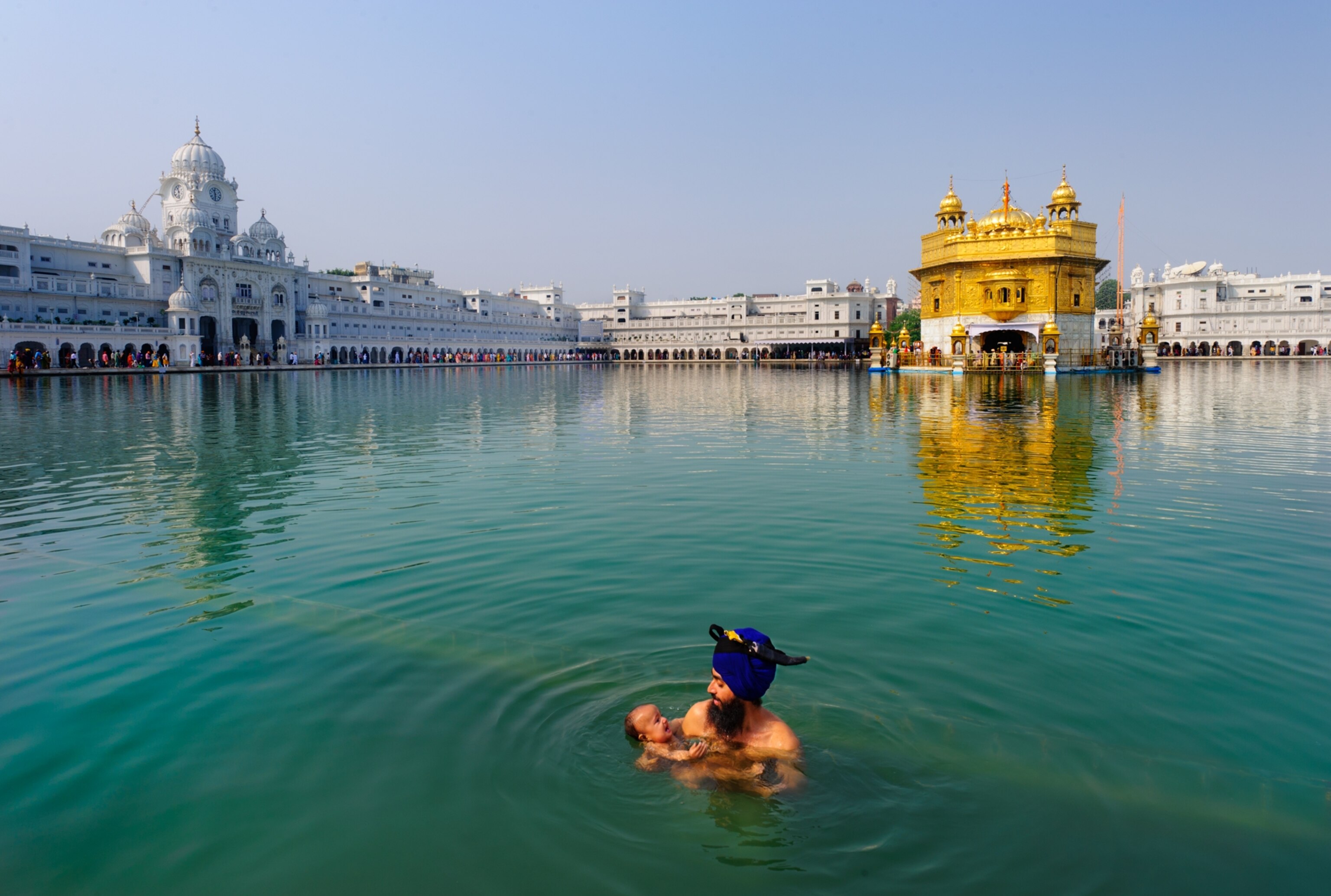
India
I was touched by the love this father emanated for his child as he dipped his newborn in the Holy Pool of Nectar at the Golden Temple in Amritsar, Punjab, India. The Golden Temple is the holiest shrine in Sikhism and a major pilgrimage for Sikhs from all over the world. Theirs is a philosophy of generosity and these were some of the gentlest and kindest people I’ve met in India. Pilgrims purify themselves in the holy waters; the men are careful to tie their ever present ceremonial daggers to their turbans for safekeeping as the women bathe modestly behind a wall.
One of the many things I have learned during my years of global travel is that no matter how unique we may look in appearance, from the exotic to the mundane, we basically have the same universal desires and concerns. Our needs are actually quite simple: to love and be loved; to have a useful place in our society with some meaningful and fulfilling occupation in our life; to have work that will hopefully provide us with enough money in our pockets to get by; to keep food on the table; and to have education, health, and safety for ourselves, our family, and our children.
Follow Wright on Instagram @alisonwrightphoto and Twitter @AwrightPhoto, and see more of her work at www.alisonwright.com.
